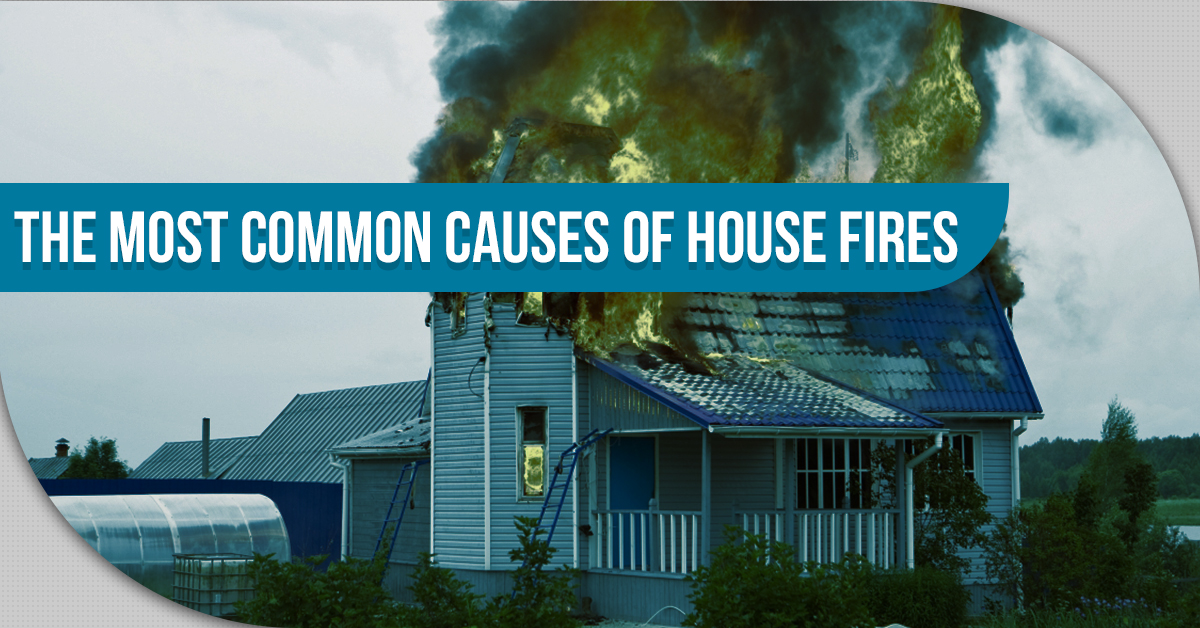The Most Common Causes Of House Fires
- Home
- The Most Common Causes Of House Fires
The Most Common Causes Of House Fires

As a homeowner, the last thing you want to worry about is your safety. But without taking the necessary safety precautions, your home may be susceptible to safety issues like poor indoor air quality, high radon levels, or house fires. According to the National Fire Protection Association (NFPA), there were 365,000 home fires in the U.S. in 2015. And that’s not even counting all the fires that occurred in businesses or other buildings around the country. Although the threat of house fires can never be completely eliminated, there are several things that you can do to help reduce the risk of house fires in your home. In this blog, we’ll talk about the different types of fires as well as how you can prevent them. Keep reading to learn more.
Causes
Cooking-related fires
Cooking-related fires are one of the most common causes of house fires in the United States. 170,200 fires from 2011-2015 were caused by cooking equipment according to the NFPA. These are somewhat shocking numbers considering most cooking-related fires can be prevented. One of the best ways to prevent these fires is to simply take more care when cooking. Don’t ever leave something on the stove unattended, and if you’re cooking something in the oven, make sure you’re always close by to check up on it regularly. If you have kids, make sure they understand the importance of this before you allow them to cook on their own.
There are several other causes of cooking-related fires including failure to clean cooking equipment, stoves or ovens being left on, or heat sources being too close to combustibles. Of course, everyone knows to avoid leaving their oven on after they’ve used it or to prevent dropping things on the stove that don’t belong. However, many homeowners don’t realize that having a dirty, disorganized cooking area is also a major cause of house fires. Keep a clean work area, never leave a heating source unattended, and educate your children about the dangers of house fires. These are the most important rules to follow in order to prevent cooking-related fires.
Lighting
On January 19, 2015, a Christmas tree engulfed in flames in a Severna Park, Maryland home. The impending fire killed all six people in the home and sparked a lot of conversations about preventing this type of fire. Naturally, when you bring a flammable object into the home and string it with electrical components, it’s going to be a fire hazard. However, there are several things you should look out for to minimize your risk of lighting-related house fires.
- Avoid bringing a dry tree into your home. If the tree doesn’t have green needles or they’re constantly falling out, you should remove it from your home and replace it with a fresh one.
- Make sure the wires on your lights aren’t frayed or worn out. You should replace your lights every couple years.
- Light bulbs that are used too long can become brittle. Once this happens, the bottle wiring can catch fire and spread throughout your home. Make sure you’re turning lights off when you don’t need them. This will also save you on your energy bills.
- If a light bulb is enclosed in a lighting fixture, it is more likely to catch fire due to more heat being trapped inside the enclosure.
- Never leave lights on overnight or when you aren’t home.
Smoking
Smoking is a very common cause of house fires. A cigarette that is not put out properly can easily lead to a house fire if it is knocked off onto the carpet or anything else flammable. These fires are typically started in bedrooms because many people will smoke while lying in bed and there are more flammable materials like bed sheets that can ignite quickly. If you have to smoke at all, do it outside away from anything flammable.
Dryers
Many homeowners don’t realize that dryers are a huge fire hazard. However, according to the US Fire Administration, 2,900 home clothes dryer fires are reported each year. This is primarily caused by lint and dust buildup which can become clogged and highly flammable once temperatures reach a certain point. Lint traps should be cleaned regularly.
These are just a few of the most common causes of house fires. If you’d like to learn more about fire safety, keep reading to learn about fire classification or visit the National Fire Protection Association for more statistics.
Contact Safe Investment Home Inspections
Safe Investment Home Inspections is your home inspection specialist in Denver and the surrounding area. We will inspect your home for any safety hazards including house fires, radon levels, air quality, and much more. If you have any questions or you’re ready to get started, contact us today.
This is part one of our blog series about common causes of house fires, read part two to learn more about the classification of fires.



